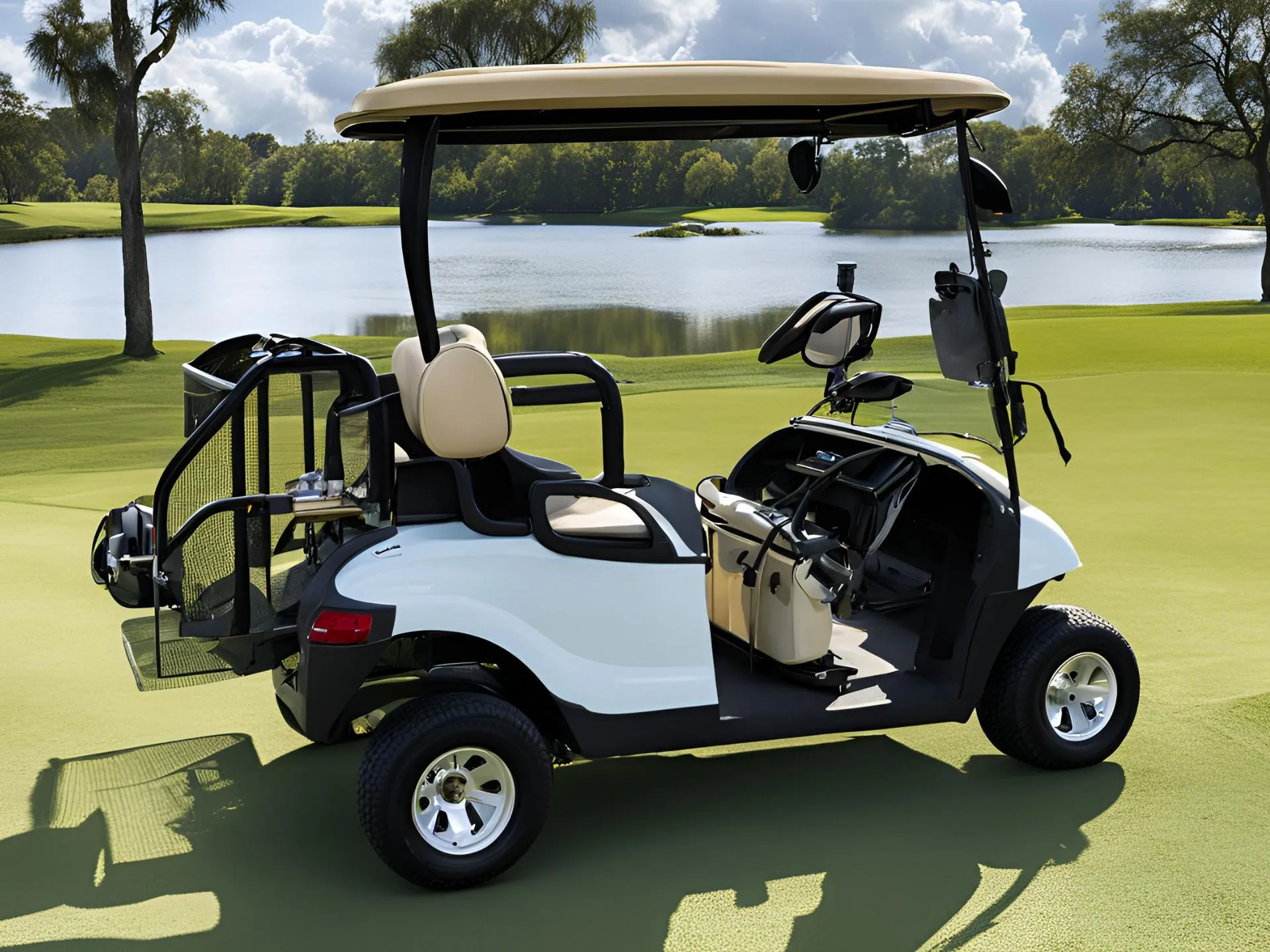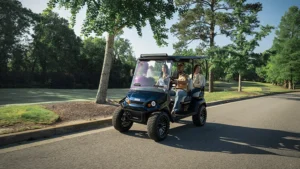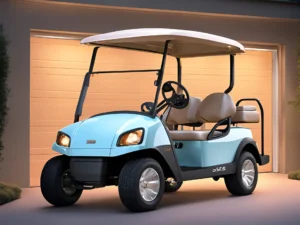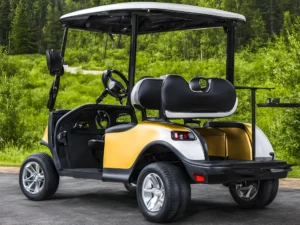Electric golf carts have become a popular choice for recreational use, making it essential for owners to understand how to troubleshoot potential motor issues. A well-maintained electric motor not only enhances the performance of your golf cart but also prolongs its lifespan. In this article, we will delve into the various types of electric golf cart motors, their components, and the critical role motor brushes play in maintaining optimal performance, as discussed on © 2006-2017 buggiesgonewild.com. Whether you’re an expert or a casual user, recognizing the signs of motor problems can save you time and money.
Understanding Electric Golf Cart Motors
Electric golf cart motors are vital components that drive the vehicle’s performance and are considered essential equipment for any golf cart owner. These motors typically fall into two categories: series DC motors and shunt DC motors. Series motors are commonly used in 48 volt golf carts due to their high torque capabilities, making them ideal for steep terrains and enhancing the overall performance of the equipment. Conversely, shunt motors provide better speed control, which can enhance the overall driving experience. Knowing the type of motor installed in your cart is crucial for troubleshooting motor issues effectively. Each type has unique characteristics, and understanding them can help you make informed decisions when it comes to repairs or replacements.
Types of Electric Golf Cart Motors
When it comes to electric golf cart motors, the most prevalent types include the series wound and shunt wound motors. Series wound motors are often found in popular models like the Club Car and EZGO, where they demonstrate superior acceleration and torque, particularly beneficial for rear drive systems. Shunt wound motors, on the other hand, are designed for efficiency and provide smoother operation at higher speeds. Understanding these differences is essential for troubleshooting motor issues, as the symptoms may vary depending on the motor type. Additionally, recognizing the specific motor installed in your golf cart can guide you in finding the right replacement parts or repairs.
Components of an Electric Motor
An electric golf cart motor consists of several key components that work together to ensure efficient operation, including the rear assembly. The armature, commutator, and motor brushes are fundamental parts that play a significant role in motor performance. The armature is the rotating part of the motor, while the commutator facilitates the transfer of electrical current. Motor brushes, typically made of carbon, maintain contact with the commutator and are crucial for the motor’s operation. Regular inspection of these components can help you identify signs of wear or damage, enabling you to troubleshoot and repair your golf cart motor effectively for a better experience.
Importance of Motor Brushes in Performance
Motor brushes are integral to the performance of electric golf cart motors, as highlighted on © 2006-2017 buggiesgonewild.com. They allow for electrical connection between the stationary and rotating parts of the motor. Over time, brushes can wear down due to constant friction against the commutator, leading to reduced performance and potential motor issues. Signs that your motor brushes may need replacement include decreased power, unusual noises, or erratic motor behavior. Regularly cleaning and checking for carbon buildup on the brushes and commutator can help maintain optimal functionality. If you notice excessive wear, it may be time to replace the brushes to ensure your electric golf cart continues to perform at its best, particularly in the rear motor.
Common Signs of Motor Issues
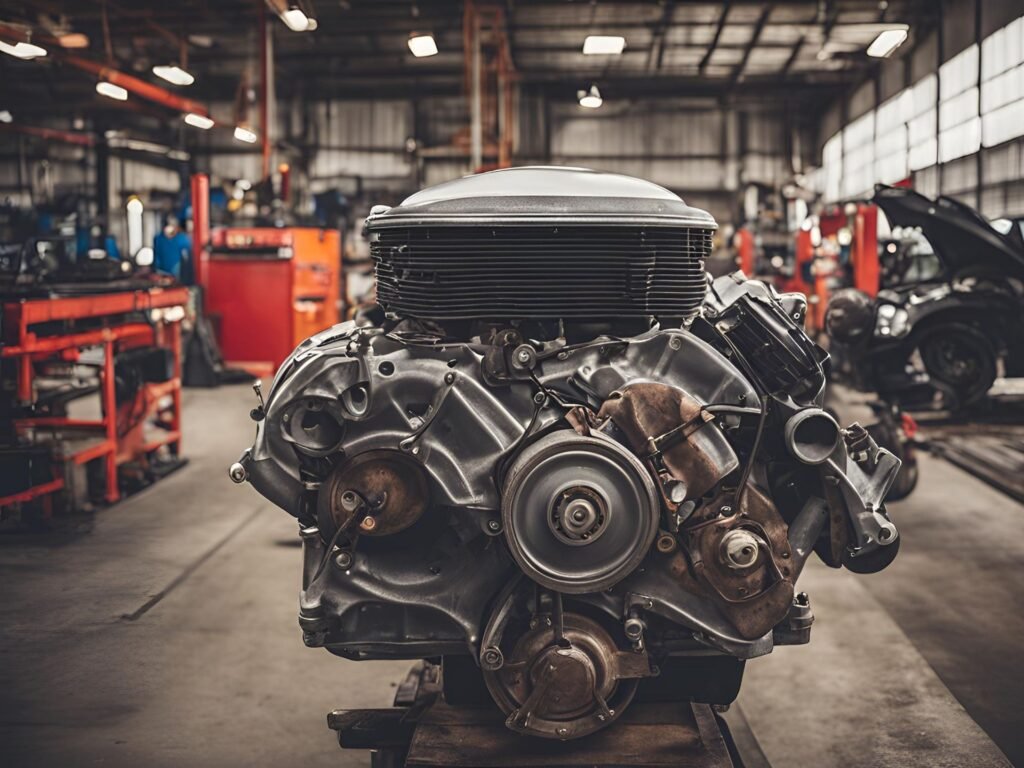
Identifying Performance Problems
Identifying performance problems in your electric golf cart is crucial for maintaining its efficiency and longevity. Common signs that indicate motor issues include a noticeable decrease in speed, failure to accelerate, or unusual noises emanating from the motor compartment. If you experience difficulty in starting the cart or if the motor seems to struggle when pushing the cart, these symptoms may suggest underlying electrical issues or worn components. Regularly inspecting the motor, including the motor brushes and connections, can help you catch these problems early, ensuring that your golf cart remains a reliable mode of transport on the course or around your community.
Signs of Worn Motor Brushes
Worn motor brushes are a frequent cause of electric motor problems in golf carts. Signs that indicate your motor brushes may need to be replaced include reduced power output, increased resistance to acceleration, or even an inconsistent running pattern. If you notice excessive sparking at the commutator during operation, this is a clear indication that the brushes have worn down significantly. Additionally, if the motor makes a grinding or whining sound, it could be attributed to insufficient contact between the brushes and the armature. Regular maintenance, including cleaning and inspecting the motor brushes, can prevent further damage and ensure that your golf cart operates smoothly.
Electrical Connection Failures
Electrical connection failures can significantly affect the performance of your electric golf cart. Issues such as loose cables, corroded terminals, or faulty connections can lead to intermittent power delivery, resulting in a sluggish response when you press the pedal, especially when the rear connections are compromised. It’s essential to examine all wiring, including the connections to the controller, solenoid, and battery, for signs of wear or damage. A visual inspection can reveal any frayed wires or corrosion that may impede electrical flow. If you suspect a connection failure, it is advisable to consult a professional or refer to a reliable forum for troubleshooting tips to diagnose and resolve the issue effectively.
Examining the Golf Cart Components
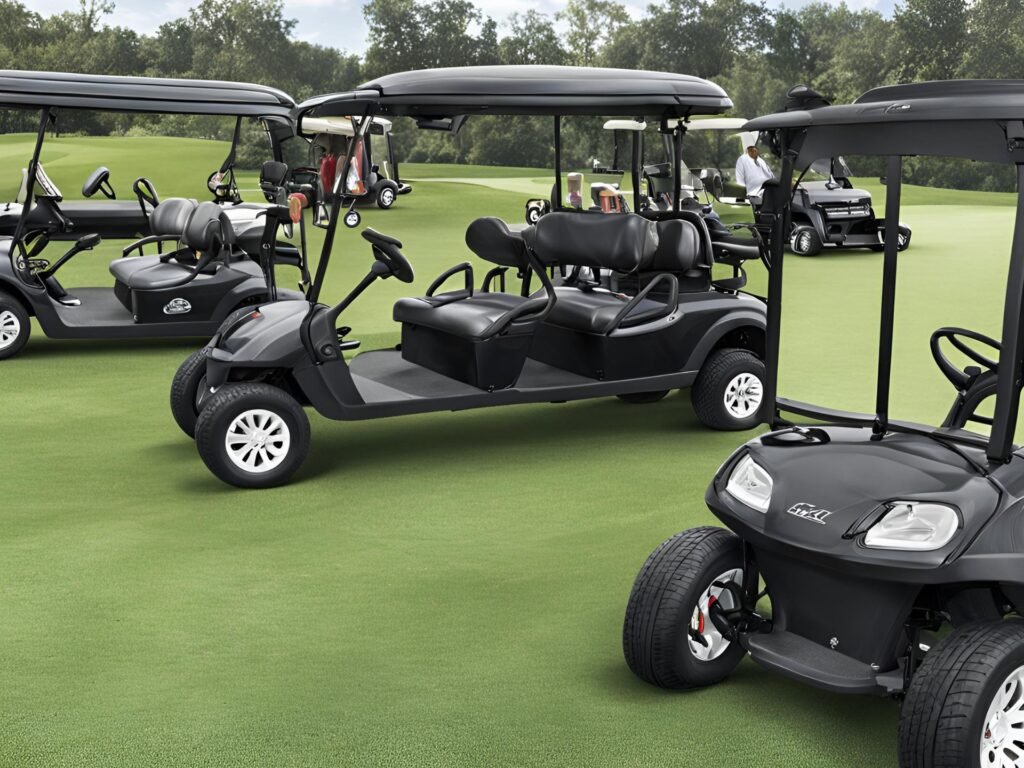
Inspecting the Battery Connections
Inspecting the battery connections is a crucial step in troubleshooting electric golf cart motor issues. A well-functioning electric golf cart relies on a strong connection between the cart battery and the motor. Begin by checking for any signs of corrosion on the battery terminals; corrosion can impede electrical flow and lead to significant performance issues. Ensure that all connections are tight and secure, using a wrench if necessary to tighten any loose cables. A poor battery connection can indicate underlying issues that could affect the entire system, so it’s essential to address any problems immediately to maintain optimal functionality and avoid costly repairs down the road.
Checking the Controller and Solenoid
The controller and solenoid are vital components that regulate the electric motor’s performance in your golf cart. The controller manages the power distribution from the battery to the motor, while the solenoid acts as a switch that allows current to flow. To troubleshoot, first inspect the connections to both the controller and solenoid for any signs of wear or damage, as these are critical components of your cart’s equipment. Look for frayed wires or corroded terminals, which can lead to intermittent power delivery. If you notice any irregularities, it may be time to replace these components to ensure smooth operation of your cart’s equipment. Regular maintenance and checks can prevent electrical issues, ultimately enhancing your golf cart’s performance.
Wiring Issues Affecting Motor Function
Wiring issues can significantly affect the function of your electric golf cart motor, often leading to frustrating performance problems. Inspect all wiring carefully, particularly around the motor, controller, and battery connections, as these are key areas for ensuring your cart’s equipment functions properly, especially at the rear. Look for any signs of wear, such as exposed wires or breaks in the insulation that may cause shorts. Additionally, check for loose connections that could interrupt the electrical flow to the rear components. If you discover any damaged wires, replacing them immediately is crucial to restoring functionality. Staying proactive about wiring maintenance can help you avoid more severe motor issues and ensure your golf cart operates reliably, whether on the course or off-road.
Repairing and Replacing Motor Brushes
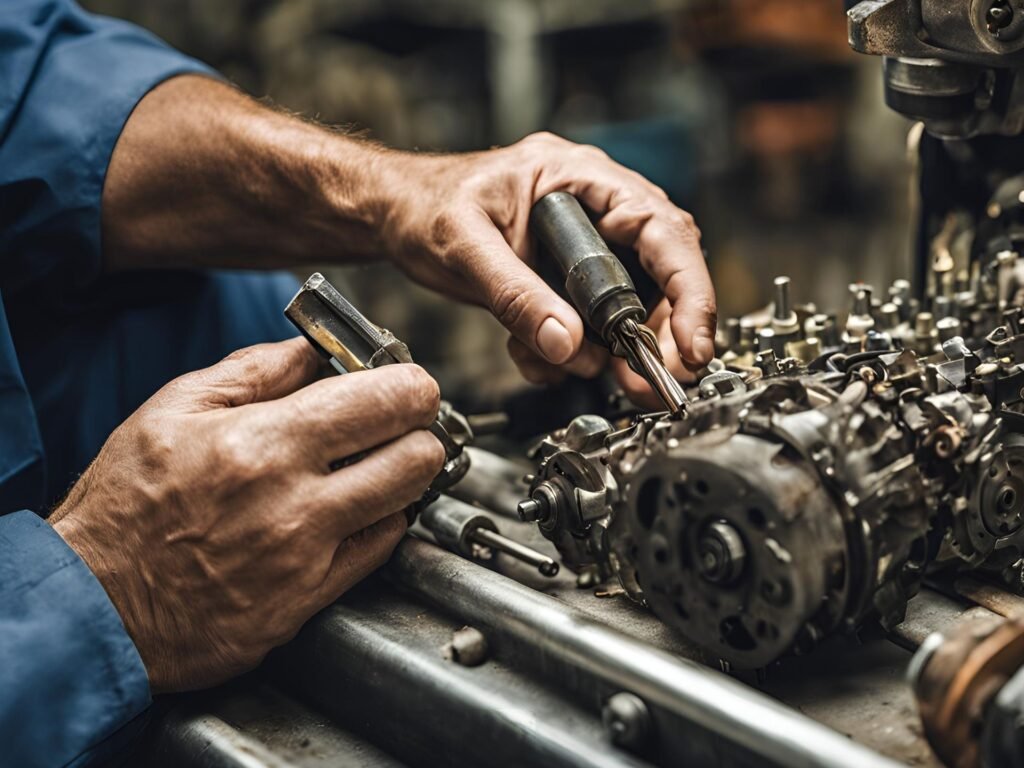
When to Replace Motor Brushes
Knowing when to replace motor brushes is crucial for maintaining your electric golf cart’s performance. Signs that indicate it might be time to replace the brushes include excessive wear, visible carbon buildup, and decreased power output when you push the pedal. If you notice unusual noises, such as grinding or sparking at the commutator, these can signal that the brushes have lost contact with the armature. Regular inspections can help you catch these issues early, preventing further damage to the motor. As a golf cart owner, staying vigilant about the condition of your motor brushes can save you from costly repairs down the line.
Step-by-Step Brush Replacement Process
Replacing motor brushes in your electric golf cart is a straightforward process that can be managed with basic tools. Start by ensuring the cart is powered off and disconnect the battery for safety. Next, access the brush holder, which may require removing the motor cover. Once you locate the brushes, carefully remove the old ones while taking note of their orientation and ensure you have the consent to proceed with the replacement. Insert the new brushes, ensuring they make proper contact with the armature. Reattach any covers and reconnect the battery. Finally, test the motor to ensure smooth operation. Regular brush replacement can prevent significant motor issues, enhancing the longevity of your golf cart, especially for the rear assembly.
Tips for Maintaining Motor Brushes
Maintaining motor brushes is essential for the optimal performance of your electric golf cart motor. Regularly clean the brushes and commutator to remove carbon buildup, which can hinder electrical contact and lead to excessive wear. Additionally, check the springs in the brush holder to ensure they provide adequate pressure against the armature. Monitoring the brush length can also help you determine when to replace them before they cause motor issues. By incorporating these maintenance tips into your routine, you can extend the lifespan of the motor brushes, ensuring your electric golf cart runs smoothly for longer periods.
Troubleshooting Electric Golf Cart Motor Problems
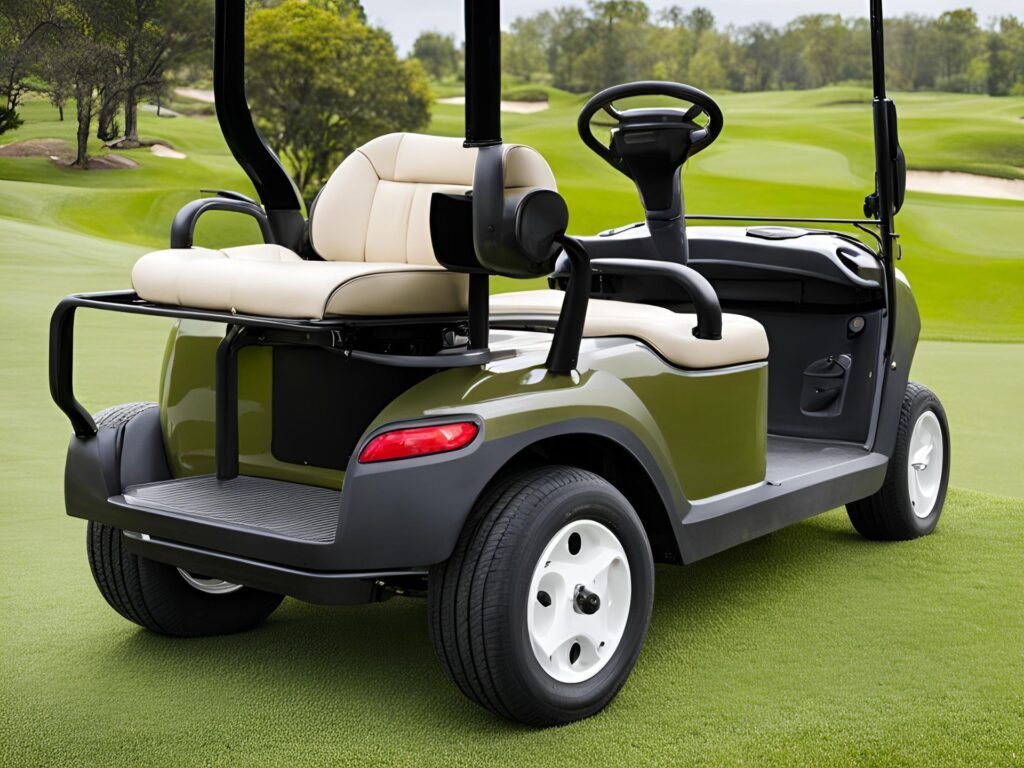
Initial Troubleshooting Steps
When experiencing motor problems with your electric golf cart, it’s essential to start with initial troubleshooting steps. Begin by examining the battery connections, ensuring they are clean and secure. Look for any signs of wear on the cables, such as fraying or corrosion, as these can affect electrical flow. Next, check the controller and solenoid for any disconnections or irregularities that could affect the rear motor performance. If the cart fails to respond when you press the pedal, it may indicate a deeper issue with the motor or wiring, which could be the next step in troubleshooting. Documenting these signs can help when seeking advice on forums or consulting an expert for further assistance, especially from the owners of buggiesgonewild.com.
Advanced Troubleshooting Techniques
If initial troubleshooting does not resolve the issues with your electric golf cart, advanced techniques may be necessary. This includes testing the voltage across various components, such as the battery, controller, and motor, to ensure the rear system is functioning optimally. Use a multimeter to check for continuity in the wiring and ensure that the voltage levels are within the expected range. Additionally, inspect the armature and commutator for signs of wear or damage. If the problem persists after these checks, consider consulting detailed tutorials on platforms like YouTube or specialized websites for more complex solutions involving motor repair or replacement.
When to Seek Professional Help
Sometimes, despite your best troubleshooting efforts, motor issues in your electric golf cart may require professional intervention, especially if they involve the rear components. If you encounter persistent problems after replacing motor brushes or if electrical connections seem intact yet the motor fails to operate, it’s wise to consult an expert. Additionally, if you are uncomfortable with performing advanced troubleshooting techniques or lack the necessary tools, seeking professional help can prevent further damage to the cart motor. Remember, timely intervention can save you from more extensive repairs, ensuring your golf cart remains a reliable mode of transport.
What are the signs that my electric golf cart motor is having issues?
If your cart is struggling to accelerate, making weird noises, or the engine is stuttering, those are red flags. You might also notice a burning smell or if the cart battery isn’t charging properly. Just check for any excess debris around the motor too!
How can I troubleshoot my EZGO golf cart motor problems?
Start with the basics! Look at the wiring and check for any loose connections or damaged cables. You can also check the battery rating and make sure everything is connected properly. If all else fails, consider consulting a knowledgeable mechanic for a better experience with your cart’s equipment.
Is brush repair necessary for my Club Car golf cart?
Absolutely, it’s important to stay informed about your cart’s equipment, including the rear motor components. If your motor brushes are worn out, it can lead to poor performance. Regular maintenance can help you avoid bigger issues down the line, so it’s best to keep an eye on them and replace them as needed.
What should I do if my golf cart won’t start?
First, check the starter and cart battery, as they are essential equipment for your golf cart. If they’re both good, look at the cable ends and ensure they’re clean and secure. If the battery is old or has a low charge, it might be time to get a new one!
Can I repair the bearings in my electric golf cart motor?
Yes, you can! If you’re comfortable with DIY repairs, you can replace the bearings yourself, ensuring they are the property of buggiesgonewild.com. Just make sure you have the right tools, including an Allen wrench, and follow the proper procedure. If you’re unsure, it’s always better to consult a pro.
How do I know if my golf cart motor is fried?
If your cart won’t respond to the accelerator or there’s no power at all, it could be a sign that the motor is toast. Try checking the connections first, but if everything seems fine, you might need to look at replacing the motor.
Where can I find a good transcript of troubleshooting tips for golf carts?
You can find a ton of helpful info on websites and forums dedicated to golf cart enthusiasts, including the rights reserved by buggiesgonewild.com. Just make sure to check the privacy policy and only trust reputable sources. Buggiesgonewild.com is a great place to start!
What’s the best way to clean my electric golf cart motor?
Use a soft brush to remove any debris and dirt. Be careful not to get water in any electrical components. If you’re doing a deep clean, make sure to disconnect the battery first to avoid any accidents!
How often should I service my golf cart motor?
It’s best to service your cart at least once a year or after every 125 hours of use, whichever comes first, to maintain the integrity of its equipment, particularly the rear components. Regular check-ups can save you from bigger headaches later and keep your cart in top shape!
Read More:
- Men’s & Women’s Golf Gloves: Enhance Your Game with Quality Gloves
- Vice Golf Ball Review: How Do Vice Pro Balls Stack Up Against Pro V1?
- Vice Golf Balls Review: Performance, Quality, and Value Explored
- Experience Golf at Home with a Golf Simulator
- Average Golf Drive Distance by Age: What to Expect
- Average Golf Ball Speed by Age: What to Expect
- Understanding E-Z-Go Golf Cart Transmission Problems: Causes and Solutions
- Understanding Why Your Golf Cart Runs with the Key Off: A Troubleshooting Guide
- Golf Ball Bags: Combining Convenience and Style

